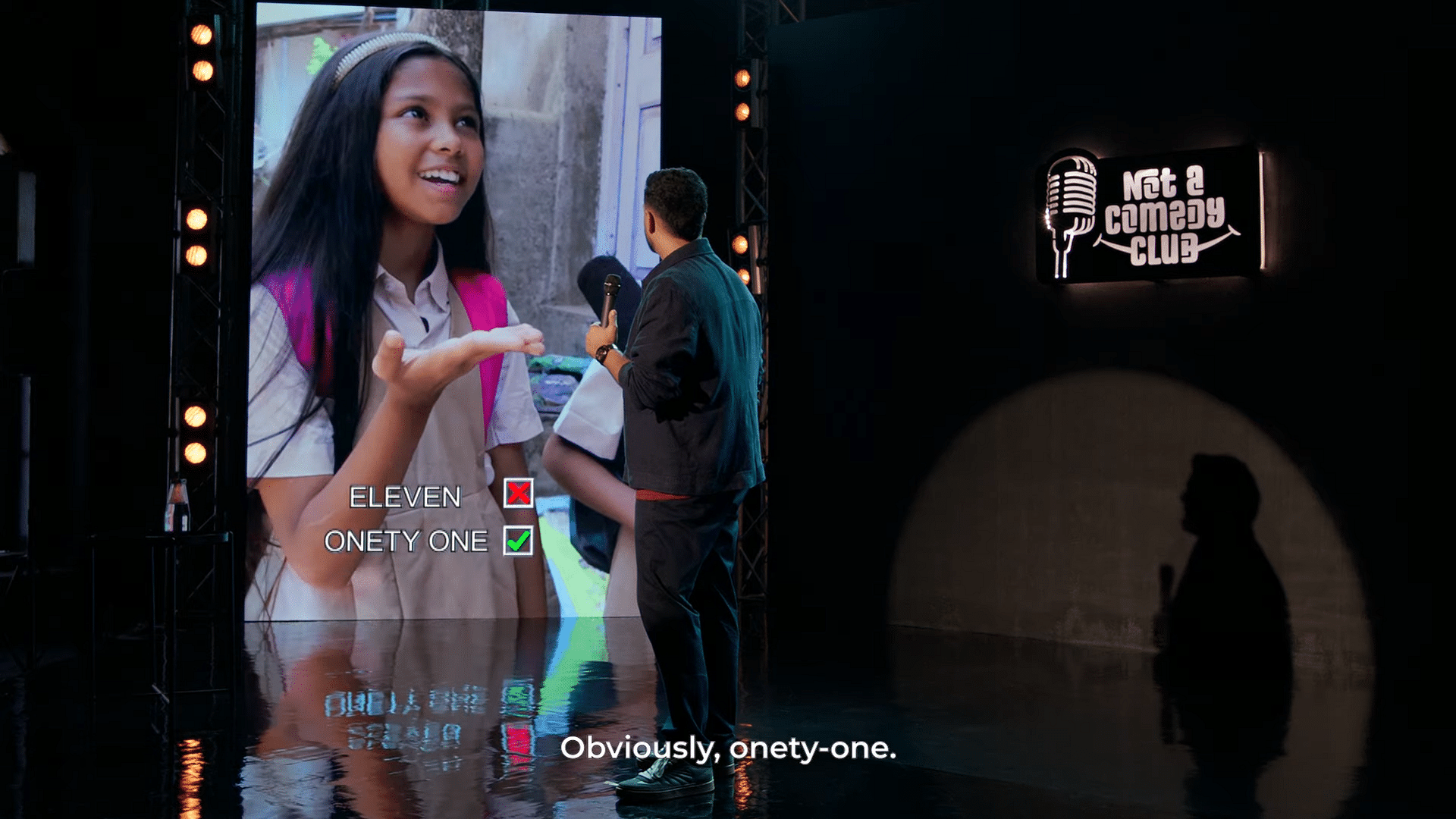Abhishek Desai, vice president & category head - grooming, and head- marketing operations, shares the intent of using humour in the campaign.
On May 22, 2024, consumer goods company Procter & Gamble (P&G) India launched a campaign under its CSR initiative, P&G Shiksha, titled #StandUpForLearningGap, featuring standup comedian Rahul Dua. By incorporating humour, the campaign aims to spotlight the issue of learning gaps in children.
Conceptualised by Leo Burnett, the film begins with two memes being played at Dua’s standup comedy show, where a journalist asks very simple math questions to children. The children misunderstand the questions and answer incorrectly, eventually sending the audience into a laughing frenzy.

Amidst the laughter, Dua poses a question to the audience: “Would you laugh if it were your child in the video?” This is when the focus shifts to the audience as they pause and realise that the incorrect answers in the meme are symptoms of a learning gap.
Abhishek Desai, vice president and category head - grooming and head of marketing operations at P&G India, shares that humour can be a powerful tool but needs to be handled with care.
/afaqs/media/post_attachments/a17755536acaba3ab70708f8e40532f777f69322d4cc93da29b10b75b3ffd76f.JPG)
Talking about the campaign, he says that when his team was working on this year's Shiksha programme, they were shown an internet meme. As a natural reaction, he and his team laughed at the meme. But then a question was posed: Would you laugh if this was your child? This is where he felt a gut punch.
“We wanted to take this same reaction to parents, guardians, teachers, and siblings. It is for them to understand what is going on. So that was the intent of leveraging humour only to set the context and for people to acknowledge and understand this and stand up in solidarity,” he says.
The meme reference in the campaign nearly resembles the famous Baingan meme where a child was asked about his favourite subject, to which he responded with his favourite vegetable, Baingan (eggplant).
Desai believes that humour can be an effective tool to engage with the audience. He mentions a Forbes report about the same meme and how, with that one answer, it became one of the top 10 most searched memes in India in 2023.
Talking about the media mix the brand will be using, Desai says that the campaign will be influenced by the challenge, cultural context, key message, and what the brand wants its consumers to take away.
“Our media mix is very dynamic. We believe every platform has a role to play, given the broad audience we are targeting. We are just getting started, and you will soon see various advocates and key opinion leaders on social media discussing the cause and driving awareness to a larger audience,” he adds.
P&G Shiksha has been running the programme to address the learning gap for 19 years. The programme started in 2005 and has impacted the lives of 45 lakh children to date. Desai says that whenever they do something on a sustained basis at this scale, people notice and attach a lot of credibility to the programme.
He says that everybody has a role to play and it is exactly why the brand is building a large-scale awareness about this issue. “The first step is to build awareness to identify the learning gaps, and only then can we address them. We want more people to join this campaign to make a difference by not only identifying and bridging those gaps for their own children but also for those around them,” explains Desai.
Importance of purpose-driven advertising
Purpose-driven advertising emphasises a brand's commitment to social, environmental, or cultural values beyond profit. By aligning with a purpose, companies can differentiate themselves in a crowded market and contribute positively to societal issues.
According to Desai, P&G believes in having the choice to step up and use its voice and advertising as a force for good and growth. Studies say that a consumer is exposed to more than 5000 ads every day. But what stands out is the collateral message that is important and connects with the audience on shared values.
“We understood from consumers' feedback that they could relate to causes, and the majority of consumers in India believe that education is an enabler not just for their own families, but for the nation as a whole. That is how Shiksha was born. When we engage in purpose-driven advertising, it does not stop at advertising. We are here to make a meaningful difference on the ground,” he conveys.
/afaqs/media/agency_attachments/2024-10-10t065829449z-afaqs_640x480.png)
 Follow Us
Follow Us